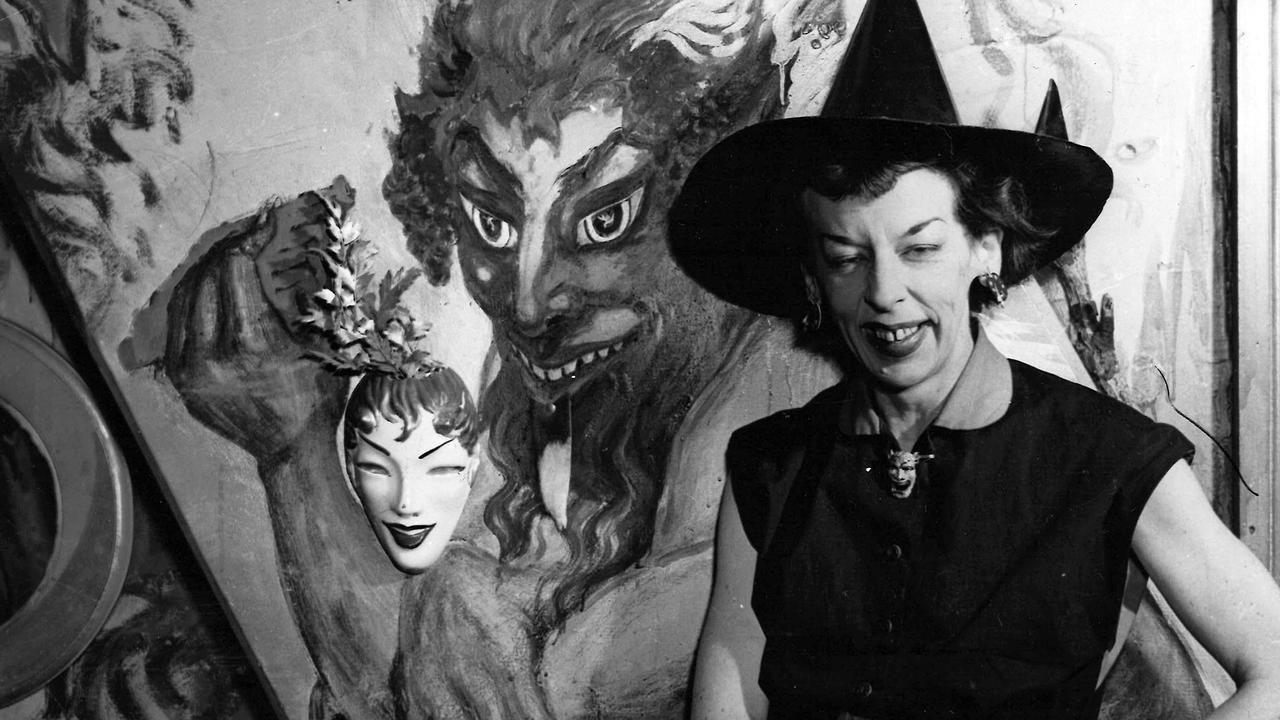The 270kg “giantess” who was a superstar of Australia’s travelling freak show circuit
Augusta Rewald was a super-sized, super-strong “giantess” who ate three dozen eggs and a loaf of bread for breakfast.

In Black and White
Don't miss out on the headlines from In Black and White. Followed categories will be added to My News.
In the days when the public paid good money to see abnormalities on display, Augusta the “giantess” was a superstar of the travelling freak show circuit.
As the promotions for her tours in Ballarat and around Australia from 1905 to 1908 proclaimed, she was both super-sized and super-strong.
Augusta Rewald is the subject of the latest episode of the In Black and White podcast on Australia’s forgotten characters:
She weighed about 270kg, measured 2.3m “around the body”, and could lift with ease two men at once.
Travelling freak shows were popular around Australia just as they were worldwide, promoting the likes of bearded women, mermaids, and conjoined twins.
Augusta’s story is told in the upcoming Scenic Rim and Surrounds Queensland edition of the Grave Tales series of books, written by Helen Goltz and Chris Adams.
She was variously marketed as the “The Empress of the Giant World”, “The Great Organic Marvel” and “The Boonah Giantess”.
In Ballarat in December 1905, crowds flocked to see Augusta “the Queensland Giantess” exhibited daily from 10am to 10pm.
“Her show included standing, posing,” Ms Goltz says.
“She’d do some of her little waltz steps across the stage and then select two lucky, maybe, gentlemen from the audience to lift.”

Augusta was the only daughter of German immigrants, and her family worked a farm in Boonah in Queensland.
But Augusta’s size was unusual even in her own family. Her father weighed little more than 60kg, her mother closer to 40kg, and the heaviest of her three brothers was only about 75kg.
By age 15, Augusta already weighed 158kg and could carry twice as much as any man.
Augusta married at 23 and her entrepreneurial husband, Heinrich, from a neighbouring farm, was the mastermind of her success, parading her around the country before gobsmacked crowds.
“It’s debatable whether he fell in love with her, or whether he saw that there was a profit to be made,” Ms Goltz says.
“She accepted his hand in marriage and it wasn’t long until she became known as the Fassifern Giantess.
“So we don’t know whether he genuinely loved her … or whether he thought this is an enterprising opportunity, I’ll make the most of this.
“And it wasn’t long before … he was touring his wife and promoting her as being the heaviest woman and being able to lift two men, et cetera.”
Augusta had many male admirers in particular.
“The men were very fascinated by her,” Ms Goltz says. “I don’t know what that’s about, but she used to attract quite a lot of men keen to see the real thing.”
According to the promotional material, Augusta’s daily breakfast consisted of three dozen eggs, a loaf of bread, nearly a pound of butter and 10-12 cups of tea.
Her lunch and tea each consisted of 4kg of meat and even more in vegetables.
The Rewalds’ marriage eventually dissolved, and Augusta lived out her final days in Gympie, and died in 1921, aged 49, from septicaemia.
By the 1920s, freak shows waned in popularity as cinemas, amusement parks and radio gained ground, and as the public increasingly treated abnormalities with sympathy rather than as entertainment.
Listen to the interview about Augusta Rewald with Helen Goltz in the In Black and White podcast on iTunes, Spotify or web.
See In Black & White in the Herald Sun newspaper Monday to Friday for more stories and photos from Victoria’s past.




